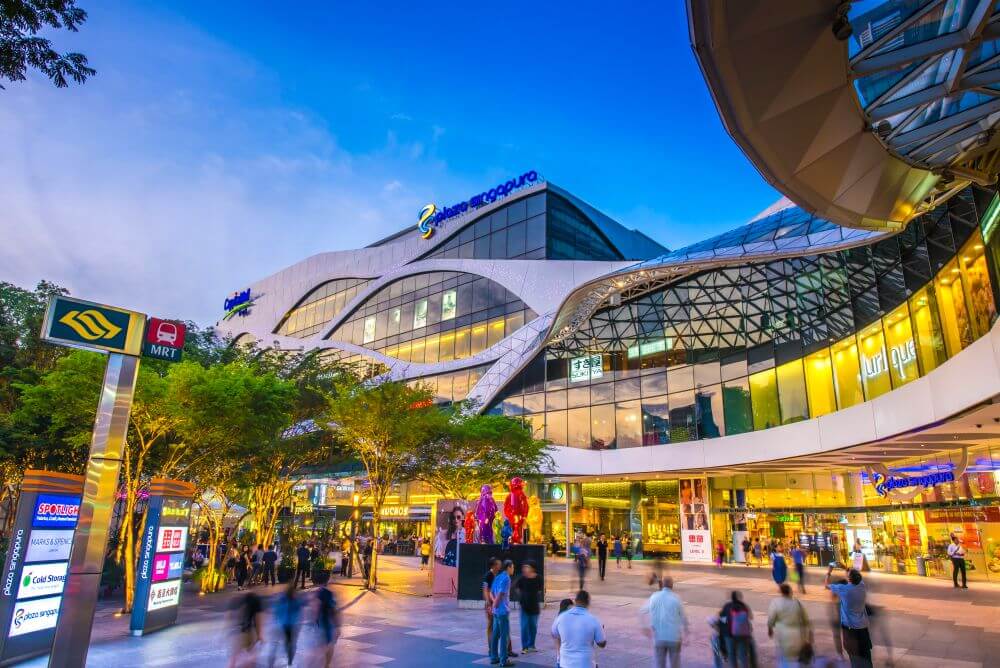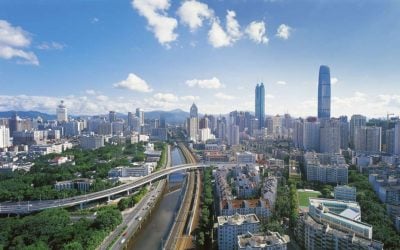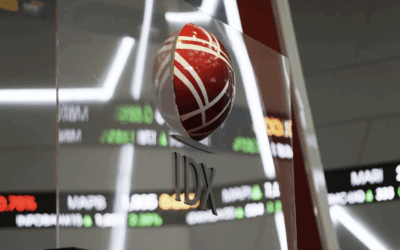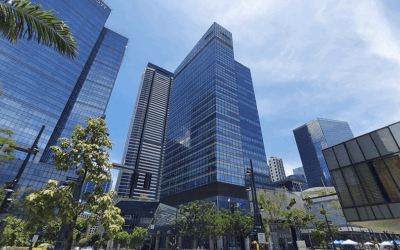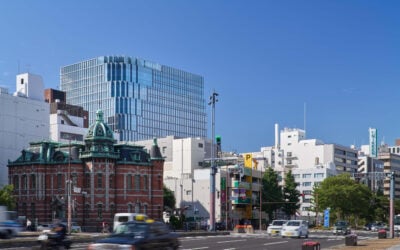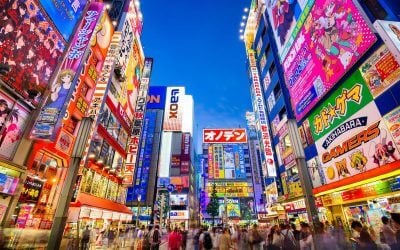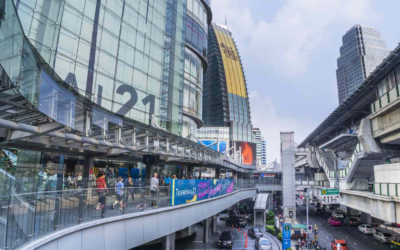REITs in Asia invest in a wide range of assets, from commercial malls and offices in city center locations, to logistics warehouses in emerging markets.
There’s an old investing maxim that author Mark Twain penned: “Buy land, they’re not making it anymore.” In short, a solid strategy is going where there are scarce resources and a rising middle class.
Few places in the world match this descriptor better than Asia – it has one of the densest population rates in the world and a vast consumer market looking to upgrade their lives.
It’s perfectly sensible advice. If the supply of land in Asia is scarce and the demand keeps growing, the price of REITs in Asia will almost inevitably rise.
REITs pool investor funds and use them to develop, manage, and sell real estate. It’s like becoming a landlord of dozens of properties simultaneously, but without the headaches that come along with it.
Furthermore, REITs in Asia also have very attractive factors when compared to Western counterparts, such as higher dividend yields.
International REITs provide access to emerging markets, such as India or Singapore, that foreign investors don’t the direct ability to invest in.
You’ll find REITs that operate in every sector you could possibly think of including offices, malls, residential apartments, and hotels. We’ll explore five of the most promising REITs in Asia though.
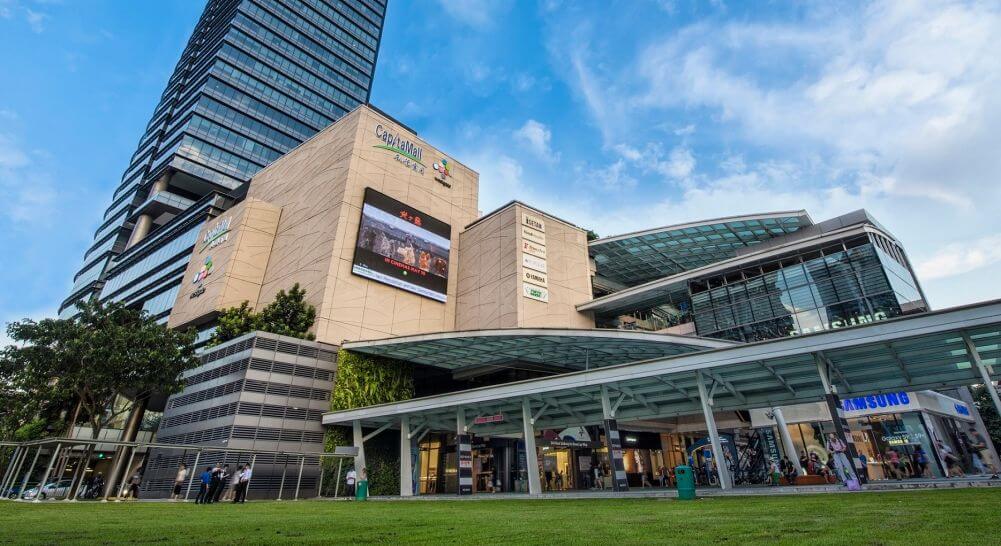
CapitaLand’s real estate holdings include, among other assets, several of the largest malls in Singapore and Malaysia.
CapitaLand Integrated Commercial Trust (CICT)
| Ticker: | SGX:C38U |
| Dividend Yield: | 4.50% |
CICT was the first REIT listed on the Singapore Exchange. Since then, it has grown to be the largest of its kind in the nation, with a market cap above S$13 billion.
It is comparatively undervalued against its Western counterparts. In the US, the median REIT has a P/E ratio of 45, while CICT has a P/E ratio of about 15.
Put simply, you’re paying almost half as much per dollar of revenue if you invest in CICT, than if you were to buy their comparative US counterpart. Besides that, you also have the stability of a first world country.
CICT primarily invests in commercial property (retail & office space) located in Singapore, but it is expanding as it has two properties in Frankfurt, Germany.
Link REIT
| Ticker: | HKG:0823 |
| Dividend Yield: | 7.15% |
If you want “too big to fail” this is the company to choose! With a market cap exceeding HK$80 billion, this Hong Kong REIT is the largest in Asia.
As its massive size implies, Link REIT owns a wide range of assets, including commercial space (retail & offices), car parks, and logistic centers. Most of the properties are located in China, though they do have some in London and Sydney.
The one caveat of Link REIT is that it does have list of controversies about environmental issues and ethics. Yet perhaps it’s a bit naive to think it’s not somewhat inevitable once any real estate companies in Asia get past a certain size.
More broadly, there’s been uncertainty regarding REITs in China, so perhaps some caution is warranted given the broader macro perspective.
CapitaLand India Trust
| Ticker: | SGX:CY6U |
| Dividend Yield: | 6.20% |
If you’re interested in the Indian real estate boom, here’s the bad news: you can’t directly own any type of property in India as a foreigner.
However, the CapitaLand India Trust is one of the most popular ways to get around this limit and invest in the world’s most populous country.
Domiciled in Singapore, the CapitaLand India Trust primarily focuses on IT and logistics properties throughout the subcontinent, particularly in Hyderabad and Mumbai.
This REIT owns seven IT parks, one logistics hub and one data center development with a vast developed area of 15 million square feet in total. Several of their assets are located in major urban centers of India.
In principle, this real estate company is a dual REIT/IT investment, as while it does focus on managing offices and other property, its heavy emphasis on IT and data centers gives it allocation to the tech industry.
CapitaLand India’s emphasis on adequate liquidity reserves makes an interesting choice, and in fact, their P/E is the lowest of any other REIT on this list at 8.80.
Put simply, this is the world’s largest India REIT allowing anyone to invest in the nation’s rising property market – regardless of citizenship!
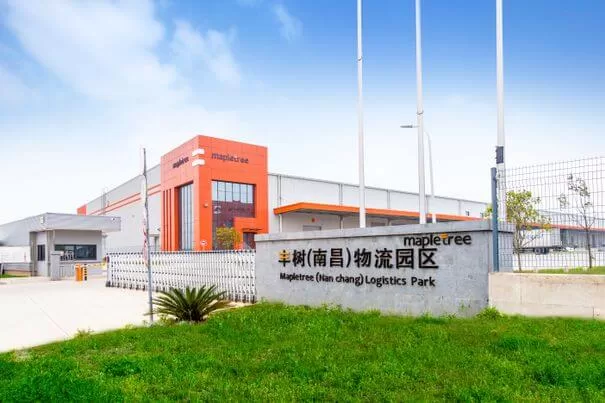
Mapletree focuses on logistics warehouses – a unique and profitable niche. The fund buys real estate in frontier markets like Vietnam along with emerging markets such as Malaysia.
Mapletree Logistics Trust
| Ticker: | SGX:M44U |
| Dividend Yield: | 6.20% |
If you’re looking for a means of investing in the general development of many countries in Asia, but want something more focused than a broad ETF, then Mapletree Logistics Trust is a good choice.
Headquartered in Singapore, this REIT operates logistics centers across a multitude of Asian property markets, such as Japan, China, South Korea, Malaysia, and Vietnam.
In other words, you get a good mix of both developing and developed countries. Some of these nations are also difficult to invest in as an independent investor, such as Vietnam.
Mapletree Logistics Trust has good, conservative management, an P/E ratio of about 20, occupancy of 97.5% with long weighted lease term to expiry of over three years.
Perhaps being “unremarkable” is the most remarkable thing about this diversified Asian REIT.
In an era when companies are usually overleveraged, or subject to the whims of changing consumer demand, it’s refreshing to buy shares in a more consistent enterprise.
Nippon Building Fund (NBF)
| Ticker: | TYO:8951 |
| Dividend Yield: | 3.80% |
An issue that REITs sometimes have is that they’re at the mercy of rapacious developers. That is not the case with the Japanese REIT Nippon Building Fund, as it’s managed by developer Mitsui Fudosan.
The company specializes in office buildings in the central Tokyo area. As such, this is a concentrated investment into the future potential of the capital of Japan.
Occupancy typically hovers around 95%-99% and some of its major clients are rather stable and well known, such as Sony, which leases 6.3% of their available office space.
From an investment standpoint, this would be the most overweight on the list, as it has a P/E ratio of around 25, which by US standards is above the mean.
Overall, this company is good if you want to own a REIT in Japan which is unlikely to cause unexpected surprises.
Buying REITs in Asia: Are They Worth It?
Asia is the most diverse region on the planet. It’s the only place where fully-developed economies, like Singapore and Japan, sit alongside emerging markets such as Malaysia and Thailand.
Best of all is that these real estate markets are often uncorrelated to the wider ebbs and flows present in Western economies.
There’s rarely any guarantees when it comes to investing. With that said, you can diversify your portfolio to a greater extent than the average investor and benefit from a booming economy by owning shares of a REIT in Asia.
After all, there’s little harm that could ever come from diversifying your portfolio into real estate located on the world’s most populous continent.
REITs in Asia: Frequently Asked Questions
What is the Largest REIT in Asia?
Listed in Hong Kong, Link REIT is the biggest in Asia with a market cap above HK$80 billion.
How Can I Buy Shares in a REIT?
Most real estate investment trusts are publicly listed. As such, you can buy REITs through your brokerage account, just like any stock.
Generally, brokers in Singapore and Hong Kong offer the widest overall access to Asian markets.

